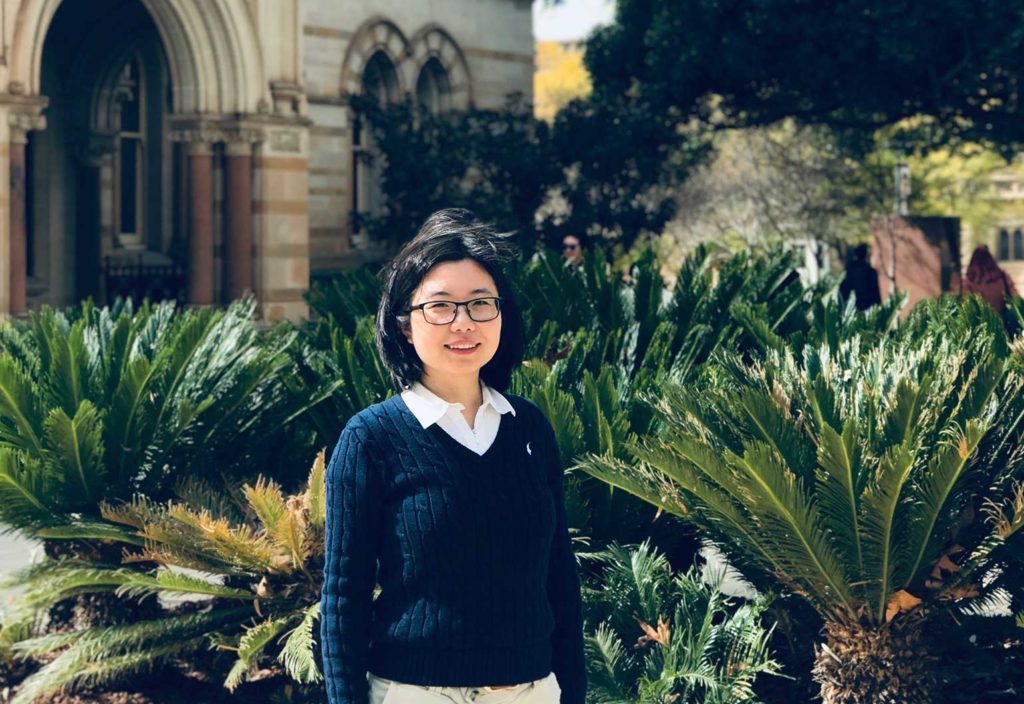Using computer modelling, one researcher is developing innovative catalyst materials to help convert renewable energy sources into transportable fuels.
Australia has an abundance of sunshine and wind, which it harnesses to produce renewable energy. About 80% of the energy used around the world is in the form of fuel, predominantly from fossil sources. Researchers are thus working to find ways to convert these clean energy sources into fuels.
To reduce the cost of producing these fuels requires highly active and highly efficient — yet affordable — catalyst materials. Engineering these materials is the work of Dr Yan Jiao, Senior Lecturer in the School of Chemical Engineering and Advanced Materials at the University of Adelaide.
“A catalyst assists in speeding up the reaction — it is not subsumed in the reaction but rather continues to act repeatedly to facilitate the speed of the reaction,” Jiao told create.
“Without the catalysts, a large amount of energy will be required to generate renewable fuel, with most of the energy doing useless work and disappearing after the conversion.”
To discover and develop these materials, Jiao builds atomic models on high-performance computers, which she says is “just like kids playing with Lego”.
“I build atom-by-atom models of catalyst materials that might never have existed before,” she explained.
“I then investigate the energetics of the reaction pathway for the generation of these fuels, which can tell us whether it’s a good catalyst material or not.
“Based on a fundamental understanding of the reaction mechanisms, I can design catalyst materials that can convert more fuel from the same amount of renewable electricity.”
Collaboration for future fuels
It makes sense that Jiao is doing this work in South Australia, where the government has a target of “net 100% renewables” by 2030.
She first developed an interest in renewable energy while still in high school, where she had a keen interest in science and engineering.
“Somehow I started to worry about global warming and environmental pollution, and renewable energy happens to be one of the most promising solutions to those problems,” she said.
“My research ultimately aims to provide efficient yet affordable catalyst materials for the production and utilisation of clean fuels, which are transformed from renewable energy sources such as solar, wind, geothermal and tide/wave.
“Therefore, these fuels are absolutely carbon neutral and do not pollute our planet. These fuels also possess high energy density, which is good for transportation or exportation.”
Jiao shares this passion for renewable energy with a number of collaborators, who test validate her materials, and she said it is this collaboration that will be key to the success of future fuels.
“I love collaboration; I collaborate extensively with scientists who are doing experiments,” she said.
“I have helped my collaborators to explain why some catalysts materials they synthesised are efficient, and why these materials are so special.
“And, through collaboration, my colleagues and I can also predict whether a class of materials is efficient for a specific type of reaction. For example, we predicted that graphene-based material can exhibit comparable catalytic activity to platinum for fuel cell cathode reactions.”
In future, Jiao wants to continue this work in order to ensure the materials she develops can have a positive impact in the world.
“My research is more on the fundamental side, and there is a valley between my research and real-life application,” she said.
“I would like to collaborate with a wide range of engineers, so the outcome of my research can be commercialised in the near future.”
